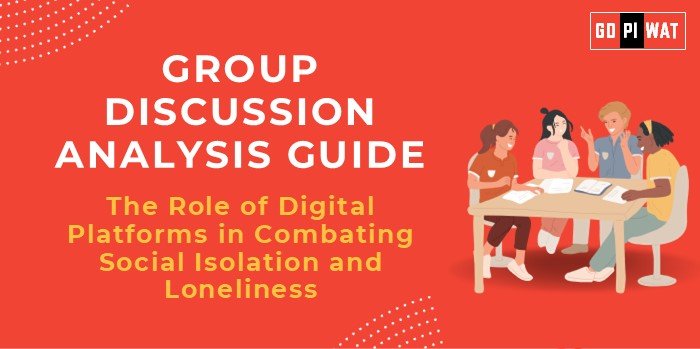📢 The Role of Digital Platforms in Combating Social Isolation and Loneliness
🌐 Introduction
In a hyper-connected yet paradoxically isolating world, digital platforms have emerged as lifelines for social interaction. These platforms address challenges exacerbated by urbanization, aging populations, and the COVID-19 pandemic.
The rise of social media, virtual communities, and telehealth solutions highlights their transformative potential in fostering connections, particularly for marginalized or remote groups.
📊 Quick Facts and Key Statistics
- 🌍 Global Internet Users: 5.3 billion (2023), reflecting widespread accessibility.
- 📱 Social Media Penetration: 59.4% of the global population actively uses social media.
- 🤝 Loneliness Statistics: 36% of U.S. adults report feeling lonely regularly (Surgeon General Report, 2023).
- 📈 Telehealth Growth: Usage surged by 154% during the pandemic (WHO, 2022).
- 🧠 Mental Health Apps: Downloads grew by 25% in 2023.
👥 Stakeholders and Their Roles
- 🏛️ Government Bodies: Create regulations to protect users and encourage platform innovation.
- 💻 Private Tech Companies: Innovate features promoting inclusivity and well-being.
- 🏥 Healthcare Institutions: Integrate digital tools for mental health care and support.
- 🧑🤝🧑 Citizens: Use platforms responsibly to foster meaningful connections.
- 🌍 NGOs: Leverage digital tools to connect isolated individuals with support networks.
🏆 Achievements and Challenges
✅ Achievements
- 📶 Increased Connectivity: Platforms like Facebook and WhatsApp maintain relationships across geographies.
- 🧘 Mental Health Support: Apps like BetterHelp provide accessible counseling services.
- 🤝 Community Building: Platforms such as Meetup and Discord foster interest-based groups.
- 🌍 Digital Inclusion: Initiatives like BharatNet bridge rural-urban divides in India.
⚠️ Challenges
- 🌐 Digital Divide: Limited access in rural areas and for older populations.
- 🔒 Privacy Concerns: Risks of data breaches and misuse of sensitive information.
- 💔 Superficial Relationships: Over-reliance on online interactions diminishes real-world connections.
- 🌀 Algorithmic Bias: Echo chambers and misinformation exacerbate isolation.
🌍 Global Comparisons and Case Studies
- 🇪🇪 Estonia: Successful e-residency program fosters digital inclusion.
- 🇯🇵 Japan: Online platforms address “hikikomori” (social withdrawal) among youth.
- 🇮🇳 India’s Telehealth Initiatives: Practo connects rural populations to healthcare.
- 🇬🇧 UK Campaign to End Loneliness: Uses digital tools to connect older adults.
🗂 Structured Arguments for Discussion
- Supporting Stance: “Digital platforms revolutionize social connection, making support networks universally accessible.”
- Opposing Stance: “Overuse of digital platforms may deepen isolation due to superficial interactions.”
- Balanced Perspective: “Digital platforms mitigate loneliness but require safeguards to ensure authenticity and inclusivity.”
🎯 Effective Discussion Approaches
- Opening Techniques:
- 📊 Statistic: “With 59% of the world on social media, digital platforms redefine human connectivity.”
- ⚖️ Contrast: “Despite connectivity, loneliness persists, challenging digital solutions’ efficacy.”
- 📚 Case Study: “Japan’s ‘hikikomori’ phenomenon highlights digital platforms’ potential and pitfalls.”
- Counter-Argument Handling:
- Highlight inclusion efforts.
- Propose hybrid models combining digital and physical interactions.
🧩 Strategic Analysis of Strengths and Weaknesses
- Strengths: Scalability, cost-efficiency, inclusivity potential.
- Weaknesses: Digital divide, privacy issues, limited emotional depth.
- Opportunities: AI-driven solutions, telehealth integration, global collaboration.
- Threats: Cybersecurity risks, misinformation, ethical concerns.
📚 Connecting with B-School Applications
- Real-World Applications: Case studies on successful platform implementations for social good.
- Sample Questions:
- “How can platforms ensure authentic interactions?”
- “What strategies can mitigate the digital divide?”
- Insights for Students: Explore digital transformation’s role in societal well-being during internships or projects.


